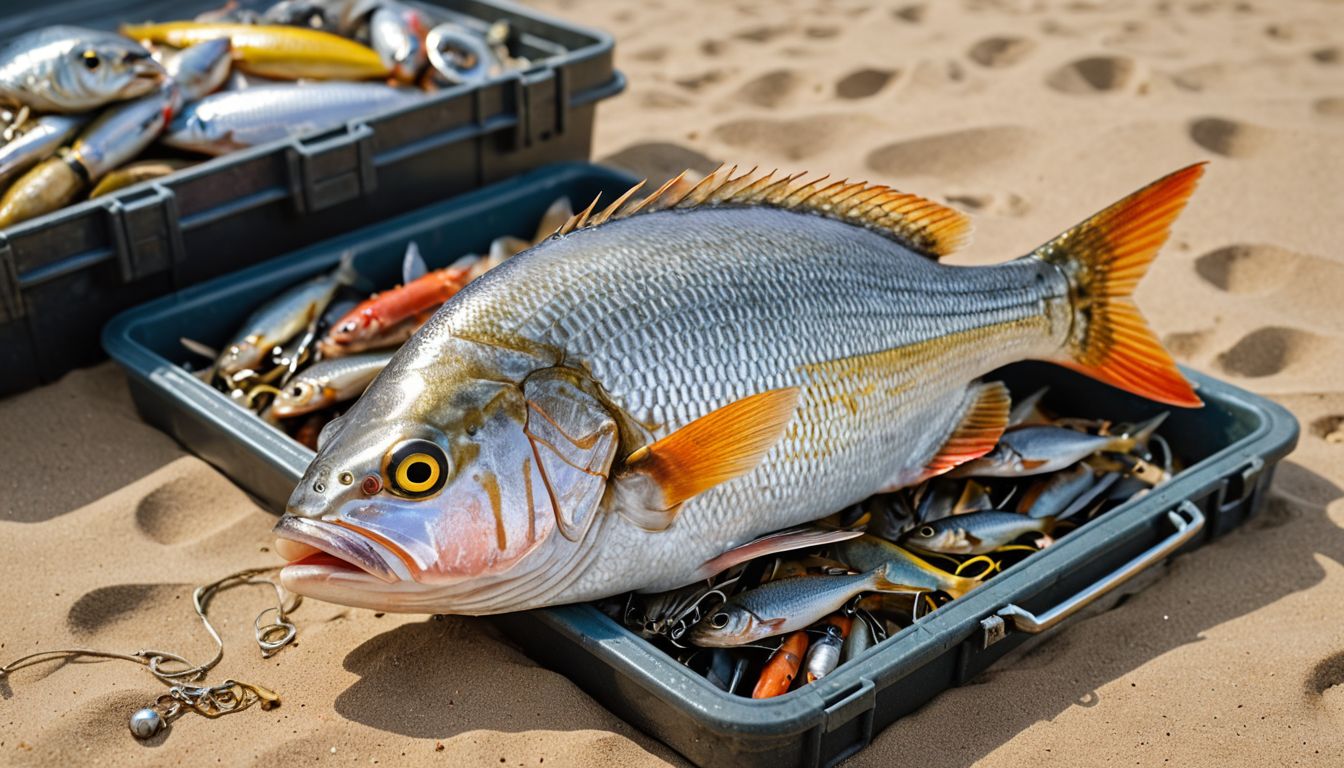Surf perch is a popular fish among anglers and seafood enthusiasts, valued for its mild flavor and availability along the Pacific Coast. However, with increasing concerns about mercury levels in fish, many wonder if surf perch is safe to eat regularly. In this article, we’ll explore whether surf perch is high in mercury, what affects mercury levels in fish, and how to enjoy surf perch safely.
Table of Contents
ToggleWhat Is Mercury and Why Is It a Concern?
Mercury is a naturally occurring element found in soil, water, and air. However, industrial pollution has increased mercury levels in oceans, lakes, and rivers, leading to higher concentrations in aquatic ecosystems.

How Mercury Enters Fish
Mercury enters water systems primarily as methylmercury, a highly toxic form that accumulates in fish. Smaller fish absorb mercury through their diet, and as larger fish consume smaller ones, mercury bioaccumulates in their tissues. As a result, fish higher on the food chain tend to have higher mercury levels.
Surf perch are not high in mercury, especially when compared to larger predatory fish like tuna, swordfish, or shark. As relatively small fish that feed on sand crabs, worms, and small crustaceans near the shore, surf perch occupy a lower position in the food chain, which reduces their mercury exposure.
Mercury Content in Surf Perch
While exact levels can vary depending on location and environmental factors, surf perch typically have low to moderate mercury levels. According to studies of coastal fish species, surf perch contain mercury levels well below the threshold considered unsafe for regular consumption.
Factors Affecting Mercury in Surf Perch
Although surf perch are generally safe, mercury levels can fluctuate due to several factors:
1. Location
The mercury content of fish depends on the water quality in their habitat. Surf perch caught near industrial areas or regions with high pollution may have slightly higher mercury levels.
2. Age and Size of the Fish
Larger, older fish tend to accumulate more mercury over their lifetime. Smaller, younger surf perch are likely to have lower mercury levels, making them a safer choice for consumption.
3. Diet
Since surf perch feed primarily on sand crabs, worms, and small crustaceans, their mercury levels are lower than fish that consume other mercury-laden prey.
Is It Safe to Eat Surf Perch?
Yes, surf perch is safe to eat in moderation. Its mercury levels are low enough for most people to enjoy without significant health risks. However, there are a few guidelines to follow for safe consumption.
Who Should Limit Surf Perch Consumption?
Certain groups are more sensitive to mercury exposure, even at low levels:
- Pregnant women
- Nursing mothers
- Young children
For these groups, limiting surf perch intake to 1–2 servings per week is advisable.
General Consumption Guidelines
For healthy adults, surf perch can be eaten 2–3 times per week without concern. As with all fish, balancing your diet with other low-mercury seafood like salmon, tilapia, and sardines is a good practice.
Benefits of Eating Surf Perch
While mercury is a concern in some seafood, surf perch also provides numerous health benefits that make it a valuable part of a balanced diet.
Nutritional Profile of Surf Perch
- Protein: Surf perch is a lean source of high-quality protein, essential for muscle repair and overall health.
- Omega-3 Fatty Acids: These heart-healthy fats help reduce inflammation, support brain function, and lower the risk of cardiovascular disease.
- Vitamins and Minerals: Surf perch contains vitamins like B12 and D, as well as minerals like selenium, which counteracts mercury’s effects in the body.
Low Mercury and High Nutrition
Surf perch’s combination of low mercury levels and high nutritional value makes it an excellent choice for people seeking healthy seafood options.
Tips for Safe and Sustainable Surf Perch Consumption
To enjoy surf perch safely and sustainably, consider the following tips:
1. Choose Smaller Fish
Opt for smaller surf perch, as they are less likely to have accumulated high mercury levels.
2. Diversify Your Diet
Balance your seafood intake by including a variety of low-mercury fish, such as salmon, trout, or sardines.
3. Follow Local Advisories
Always check local fishing and consumption advisories. These provide specific information about mercury levels in surf perch from your area.
4. Prepare Surf Perch Properly
Proper cooking techniques, such as grilling or baking, help preserve the fish’s nutritional value while avoiding added fats or unhealthy ingredients.
Mercury Levels in Surf Perch vs. Other Fish
To better understand how surf perch compares to other fish, here’s a quick breakdown:
| Fish | Mercury Level | Consumption Frequency |
|---|---|---|
| Surf Perch | Low to Moderate | 2–3 times per week |
| Tuna (Canned, Light) | Moderate | 1–2 times per week |
| Swordfish | High | Avoid or rarely consume |
| Salmon | Low | 2–3 times per week |
| Tilapia | Very Low | Unlimited |
As seen above, surf perch falls into the low to moderate mercury category, making it a safer choice than larger, predatory fish.
Final Thoughts: Is Surf Perch High in Mercury?
Surf perch is a low-mercury fish that is generally safe to eat in moderation. Its nutritional benefits, combined with its low risk of mercury exposure, make it a popular choice for health-conscious seafood lovers. By following consumption guidelines and sourcing your fish responsibly, you can enjoy the mild, delicious flavor of surf perch while protecting your health.
FAQs
- Does surf perch have high mercury levels?
No, surf perch typically has low to moderate mercury levels, making it safe for most people. - How often can I eat surf perch?
Healthy adults can enjoy surf perch 2–3 times per week, while pregnant women and children should limit intake to 1–2 servings per week. - What affects mercury levels in surf perch?
Factors like location, age, size, and diet of the fish influence mercury levels. - Is surf perch healthier than tuna?
Yes, surf perch has lower mercury levels than tuna and provides a lean source of protein and omega-3s. - Can kids eat surf perch?
Yes, but limit their intake to 1–2 servings per week due to mercury sensitivity in children. - How do I reduce mercury exposure from fish?
Diversify your diet with a variety of low-mercury seafood like salmon, sardines, and tilapia. - Is surf perch sustainable?
Surf perch is generally a sustainable fish, but check local regulations to ensure responsible fishing practices. - What’s the best way to cook surf perch?
Grilling, baking, or pan-frying are great options that preserve the fish’s flavor and nutrients. - Are all surf perch species low in mercury?
Most surf perch species have low mercury levels, but always check local advisories for specific information. - Where can I catch surf perch?
Surf perch are commonly found along sandy beaches of the Pacific Coast, from California to Washington.

